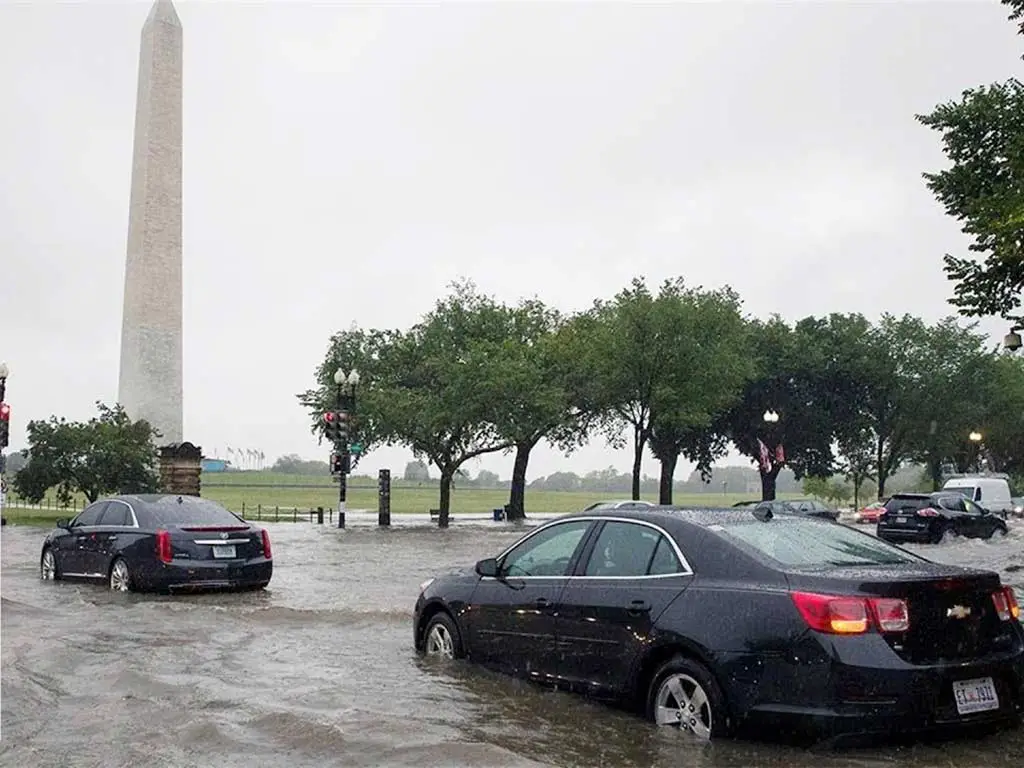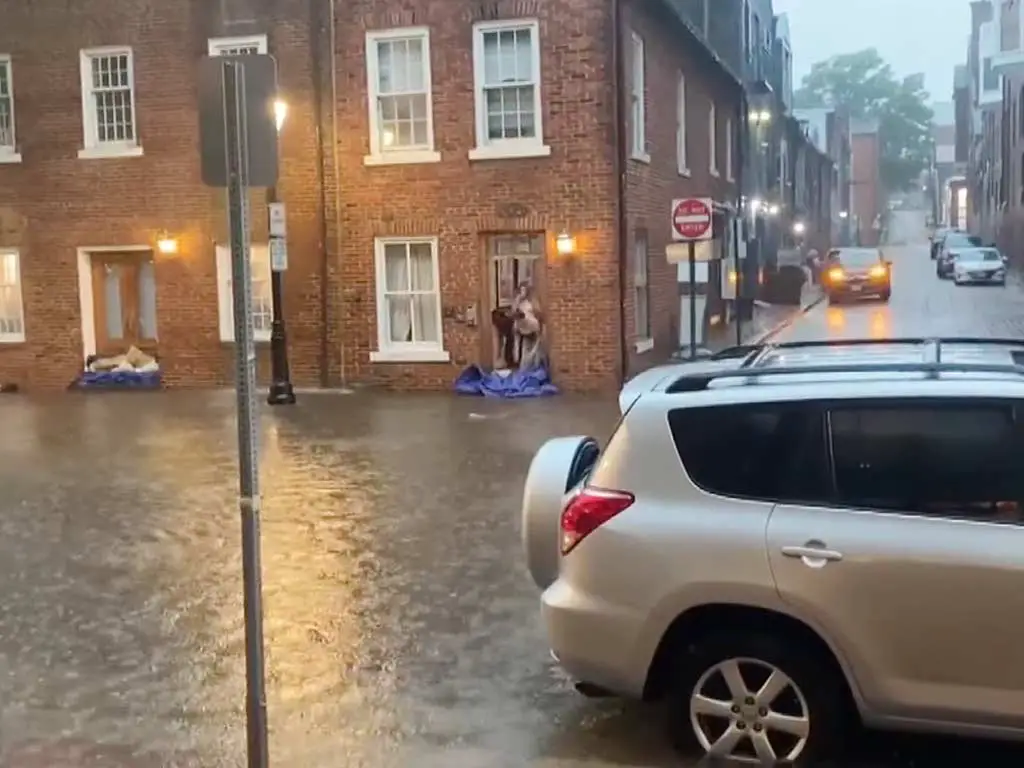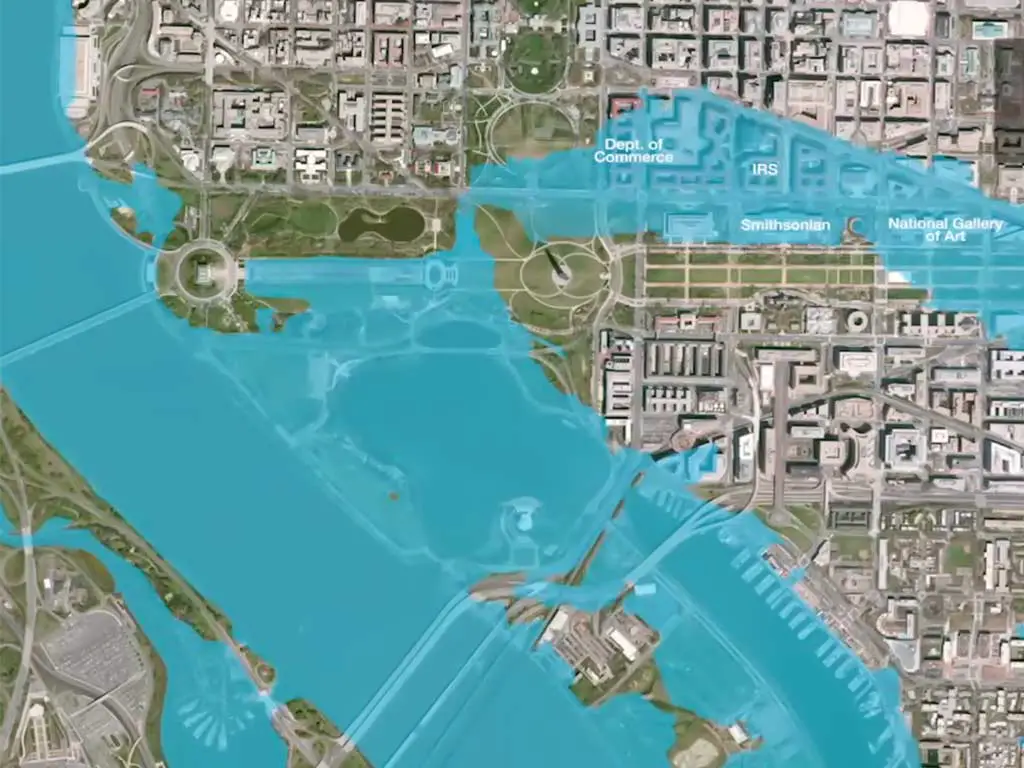Exploring the tumultuous past of Washington DC’s flood history reveals a narrative woven with devastation and resilience.
From the catastrophic Johnstown Flood of 1889 to the impactful aftermath on Georgetown’s commercial waterfront, each event reshaped the landscape and livelihood of the capital city.
The echoes of these historical floods still resonate in the canals, streets, and neighborhoods of Washington DC, leaving an indelible mark on its development.
As you delve into the accounts of the floods that shaped Washington DC’s history, you’ll uncover tales of destruction and rebirth, where nature’s forces clashed with human endeavors.
The struggles faced by communities in the wake of these disasters serve as a testament to the city’s enduring spirit and determination to overcome adversity.
Join us on a journey through time as we unravel the layers of Washington DC’s flood history, a story etched in the very fabric of the nation’s capital.
Major Flood Events in Washington D.C. History

Major flood events have historically impacted Washington, D.C., with several notable occurrences throughout its history.
Here are some significant flood events:
Great Potomac Flood of 1936, March 17–19
In March 1936, the Great Potomac Flood ravaged Washington D.C., causing significant damage across the city. The flood, stemming from heavy rainfall, led to widespread devastation, affecting homes, businesses, and infrastructure.
The Potomac River swelled, breaching its banks and inundating many parts of the city. The flood of 1936 remains etched in the memory of Washingtonians as one of the most impactful natural disasters in the city’s history.
The city’s resilience was tested as communities came together to rebuild and reinforce defenses against future flooding incidents.
The lessons learned from the 1936 flood have since shaped Washington D.C.’s approach to disaster preparedness and infrastructure development.
Record Flood of 1942, October 14–17
During October 1942, Washington D.C. experienced a record flood that brought chaos and destruction to the city.
Unprecedented rainfall, with totals ranging from 4 to 18 inches, inundated the region, causing severe flooding along the Blue Ridge and in areas east and west of it.
The Potomac River reached a crest of 17.7 feet, surpassing the previous flood of record. The flood submerged Maine Avenue and hundreds of homes in Georgetown, highlighting the extent of the disaster and its impact on the city.
The Great Flood of 1889
The Great Flood of 1889 marked a significant turning point in Washington D.C.’s history, leading to irrevocable changes in the city’s landscape.
The devastation caused by this flood, particularly along Water Street, where remnants of coal, timber, and fertilizer lay scattered, was profound.
The destruction of the CO Canal, a vital lifeline for Georgetown, added to the city’s woes, reshaping its commercial waterfront forever.
The aftermath of the Great Flood of 1889 prompted extensive reconstruction efforts in Washington D.C., with a focus on improving infrastructure and implementing flood control measures to prevent future disasters.
These initiatives aimed to safeguard the city against similar catastrophic events and ensure its resilience in the face of natural disasters.
The Potomac Flood of 1936
The Potomac Flood of 1936 stands out as a testament to the city’s vulnerability to natural disasters. The heavy rains during this period caused the Potomac River to surge, breaching its banks and inundating large swathes of Washington D.C.
The flood’s aftermath left a trail of destruction, impacting both residential and commercial areas and underscoring the need for robust flood mitigation measures in the city.
Washington D.C. has since implemented various flood control projects, such as levees and improved drainage systems, to mitigate the impact of future flooding events and protect its residents and infrastructure from similar disasters.
The 1942 Record Flood
The record flood of 1942 remains a somber chapter in Washington D.C.’s flood history, highlighting the city’s susceptibility to extreme weather events.
With torrential rainfall exceeding 10 inches in some areas, the flood wreaked havoc on the region, submerging key areas like Maine Avenue and Georgetown.
The record crest of the Potomac River emphasized the severity of the flood, necessitating swift recovery efforts to restore normalcy to the city.
In the aftermath of the 1942 flood, Washington D.C. faced significant challenges in rebuilding infrastructure and homes devastated by the disaster.
The community rallied together to support one another and implement measures to mitigate future flood risks, marking a turning point in the city’s approach to disaster preparedness and response.
Hurricane Agnes Impact in 1972
Hurricane Agnes’s impact in 1972 brought widespread devastation to Washington D.C., underscoring the city’s vulnerability to tropical storms and hurricanes.
The storm’s torrential rains led to severe flooding, causing damage to infrastructure and displacing residents.
Hurricane Agnes served as a stark reminder of the importance of preparedness and resilience in the face of natural disasters.
Understanding Washington D.C.’s flood history is crucial for city planners and residents alike to mitigate future risks and protect the community from potential devastation.
By learning from past events like Hurricane Agnes in 1972, strategies can be implemented to enhance preparedness and build resilience against flooding disasters.
2006 Federal Triangle Flash Flood
In 2006, Washington D.C. faced a flash flood in the Federal Triangle area, exposing the city’s susceptibility to sudden and intense rainfall.
The flash flood highlighted the challenges posed by urban flooding, as streets became waterlogged and infrastructure strained to cope with the deluge.
The event served as a wake-up call for improved stormwater management and flood prevention measures in the city.
As a result of the 2006 flash flood in Washington D.C., city officials have since implemented various stormwater management initiatives and flood prevention strategies to better prepare for future incidents and reduce the impact of urban flooding on infrastructure and residents alike.
Understanding Flood Risks in D.C.

Understanding flood risks in Washington, D.C. is crucial due to the city’s unique geographical, hydrological, and climatic conditions.
Here are the primary factors contributing to flood risks in the area:
Types of Flooding
In Washington D.C., three main types of flooding pose significant risks to the area: riverine, coastal, and interior flooding.
Each type has distinct causes and accompanying risks:
- Riverine Flooding: This type of flooding occurs when heavy rainfall or snowmelt in the Potomac River watershed upstream of the city leads to flooding in Washington D.C. several hours or days later.
- Coastal Flooding: Coastal floods are a result of tropical storms or hurricanes that push water from the Chesapeake Bay and Atlantic Ocean up the Potomac River, causing flooding in the region.
- Interior Flooding: Also known as flash floods, interior flooding happens when intense rainfall overwhelms the stormwater sewer system, leading to rapid and severe flooding in certain areas of the city.
Factors Contributing to Flood Risks
Various factors contribute to the flood risks faced by Washington D.C. residents.
These include:
- Levee Systems: While the Potomac Park Levee System and the Anacostia River Levee System mitigate some flood risks from riverine and coastal flooding, they do not address the risks associated with interior flooding.
- Ground Absorption: The city’s ground has limited capacity to absorb excess water during heavy rainfall, leading to pooling and runoff that exacerbate flood risks.
- Urban Development: The way communities are built can impact the severity of flooding events. Poor urban planning choices can worsen the effects of flooding in certain areas.
- Climate Change: With shifting climate patterns, the frequency and intensity of storms leading to flooding events may increase, posing additional challenges for flood mitigation and preparedness efforts.
Effects of Flooding on Infrastructure and Residents

Flooding can have profound and multifaceted effects on both infrastructure and residents. In Washington, D.C., a city vulnerable to various types of flooding, these impacts are especially significant and diverse.
Here’s a detailed examination of the effects:
Urban Development and Its Challenges
When exploring the effects of flooding on Washington D.C.’s infrastructure and residents, it becomes apparent that urban development plays a crucial role.
The city’s growth and expansion have led to challenges in managing stormwater and flooding risks effectively. As urban areas increase in density, the natural absorption of rainwater is limited by impermeable surfaces like pavement and buildings.
This lack of absorption exacerbates flooding during heavy rainfall events, putting both infrastructure and residents at risk.
Moreover, the choices made in urban planning, such as constructing buildings in flood-prone areas or altering natural drainage patterns, can further contribute to the vulnerability of both infrastructure and residents.
Inadequate stormwater management systems and outdated infrastructure can lead to increased flood damage, disrupting daily life and posing safety concerns for the city’s inhabitants.
Response and Recovery Efforts
In light of the challenges posed by flooding in Washington D.C., response and recovery efforts play a vital role in mitigating the impact on infrastructure and residents.
Timely and effective response measures, such as flood warnings, evacuation plans, and emergency services coordination, are critical in safeguarding lives and minimizing damage during flood events.
Recovery efforts post-flooding are equally essential to restore infrastructure, provide assistance to affected residents, and implement measures to prevent future damage.
The coordination among government agencies, community organizations, and residents is crucial in ensuring a swift and comprehensive recovery process.
By understanding the implications of flooding on urban development and prioritizing proactive response and recovery efforts, Washington D.C. can enhance its resilience to future flood events and better protect its infrastructure and residents.
Flood Management and Mitigation Strategies

Washington, D.C., situated along the Potomac River and characterized by a variety of water bodies, faces significant flood risks, particularly from storm surges, riverine flooding, and flash floods.
Addressing these risks requires a multifaceted approach involving infrastructure development, policy implementation, community engagement, and technological innovation.
Here are the key flood management and mitigation strategies employed in Washington, D.C.:
Federal and Local Collaboration
In managing floods effectively in Washington D.C., collaboration between federal and local entities plays a pivotal role.
By working together, these organizations can leverage their respective resources and expertise to enhance flood response and mitigation efforts.
Federal agencies bring in broader perspectives and support, while local authorities offer on-the-ground knowledge and insights.
This collaboration ensures a comprehensive approach to flood management, combining national-level strategies with localized solutions to address the unique challenges posed by flooding in the region.
Advances in Flood Prediction and Monitoring
Advancements in flood prediction and monitoring technologies have significantly improved Washington D.C.’s ability to forecast and prepare for potential flood events.
Utilizing advanced modeling techniques, real-time data collection, and sophisticated monitoring systems, authorities can now predict floods with greater accuracy and lead time.
These tools not only help in issuing timely warnings to residents and businesses but also enable proactive measures such as deploying temporary barriers and optimizing evacuation procedures.
By staying abreast of the latest innovations in flood prediction and monitoring, Washington D.C. can enhance its overall resilience to flooding and minimize the impact of future inundations.
Frequently Asked Questions
How vulnerable is Washington D.C. to flood events?
Washington D.C. has a history of severe flood events due to factors like urban development, with notable floods like the Great Potomac Flood of 1936 and Hurricane Agnes in 1972 demonstrating its vulnerability.
What challenges does urban development pose for flood risks in Washington D.C.?
Urban development increases flood risks in Washington D.C. by creating more impermeable surfaces and higher density, making stormwater management more challenging and exacerbating flooding issues.
Why are urban planning decisions crucial in addressing flood vulnerability in Washington D.C.?
Urban planning decisions play a significant role in either worsening or improving vulnerability to floods in Washington D.C., highlighting the importance of strategic planning to mitigate flooding impacts effectively.
How essential are response and recovery efforts in managing flood impacts in Washington D.C.?
Response and recovery efforts are crucial for mitigating flood impacts in Washington D.C., emphasizing the need for coordinated efforts among various entities to facilitate effective recovery and implement preventive measures for the future.
What role does collaboration between federal and local entities play in managing floods in Washington D.C.?
Collaboration between federal and local entities is crucial for efficiently managing floods in Washington D.C., as it allows the pooling of resources and expertise to enhance flood response, mitigation, and overall resilience to natural disasters.
Conclusion
By exploring the historical flood events in Washington D.C., such as the Great Potomac Flood of 1936 and Hurricane Agnes in 1972, we gain insights into the region’s vulnerabilities to natural disasters.
The impact of urban development on flooding risks is evident, with increased density and impermeable surfaces posing challenges in stormwater management. Urban planning choices play a key role in exacerbating vulnerability to floods.
Response and recovery efforts are crucial in mitigating the impacts of floods. Effective coordination among various entities is essential for efficient recovery and for implementing future prevention measures.
Emphasizing collaboration between federal and local entities is vital for managing floods effectively. By leveraging resources and expertise, enhanced flood response and mitigation can be achieved.




Allison Brice